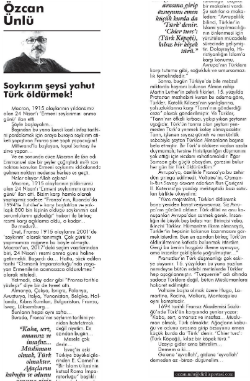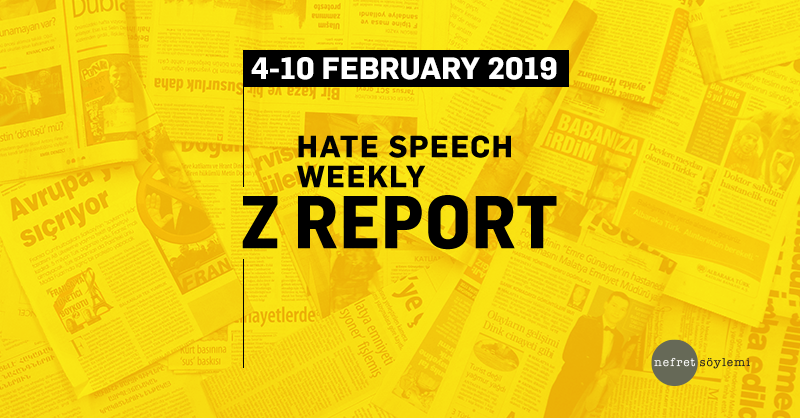Within February 4-10, 2019, three articles that generate hate speech were selected from print media. You can find these articles that contain hate speech against the French, Jews and the British as well as the analyses written about them below. 1
1.
Özcan Ünlü, in his column titled “Genocide thing or killing Turks!”, writes about French President Emmanuel Macron’s declaration April 24 as the Armenian Genocide commemoration day. Claiming that this decision is a result of “anti-Turk” sentiment in France, Ünlü writes: “French people’s hatred of Turkey dates back to old times. Turks have always been humiliated in almost all literary works since the 16th century. Not only Turks but also Muslims are insulted with the word ‘Turquerrie’.” With these remarks, he associates French identity with “hatred of Turks” and holds the French responsible for insulting Turks and Muslims. Thus, the columnist represents French identity as an “enemy” and provokes the reader against the French. |
2.
The article published in Milli Gazete with the title “Jews attacked the mosque” reports the writing on the wall of a mosque in the West Bank. In the article, it is reported that racist slogans in Hebrew were written on the wall and all Jews are held responsible. Thus, the newspaper associates Jewish identity with violence and foments enmity against Jews. |
3.
The article published in Milat with the title “British torment to migrants” reports the racist attack to a Syrian refugee boy in Huddersfield. With the title “British torment”, British identity is held responsible for the attack. Thus, the article associates British identity with torment, reinforcing negative opinions about the British. |
1. Within the scope of the media monitoring work focusing on hate speech, all national newspapers and around 500 local newspapers are monitored based on pre-determined keywords (e.g. Traitor, apostate, refugee, Christian, Jewish, separatist, etc.) via the media monitoring center. While the main focus has been hate speech on the basis of national, ethnic and religious identities; sexist and homophobic discourses are also examined as part of the monitoring work.

